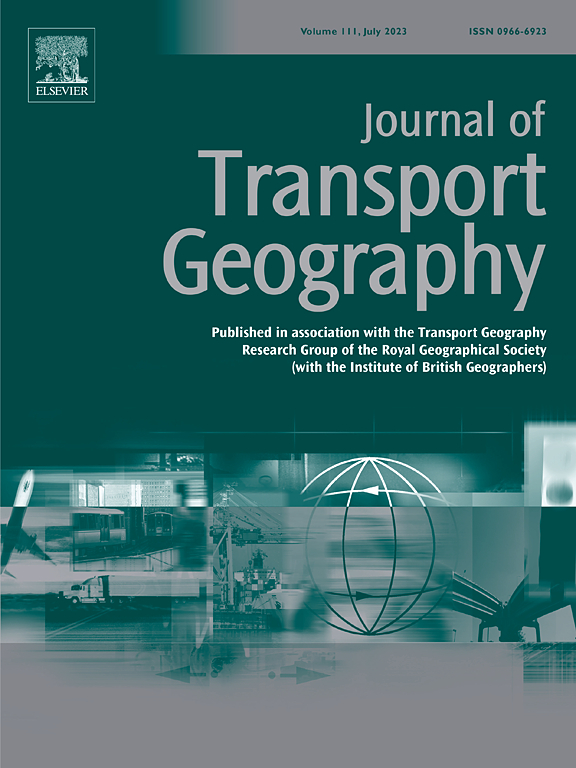以地铁网络中人类流动性为主题来描述城市的区域重要性
IF 6.3
2区 工程技术
Q1 ECONOMICS
引用次数: 0
摘要
揭示交通系统中人类移动网络的高阶时空依赖关系为城市结构分析提供了重要见解。在大多数现有的研究中,人类流动网络通常是通过汇总所有的旅行而不区分谁乘坐哪一次旅行来构建的。相反,我们认为个人流动动机——来自个人日常出行的高阶模式——是人类流动网络的基本单位。在这项研究中,我们提出了两个基于流动性主题的网络建设框架来表征城市内部的区域重要性。首先,我们考虑了个人一天行程中的隐性依赖,并基于这一机制构建了出行网络。其次,从PageRank算法中获得灵感,我们假设个人根据他们的旅行意图为目的地分配不同程度的重要性。我们开发了基于母题和基于母题的网络构建框架。利用上海、北京和杭州三个城市的大规模地铁数据,我们构建了三种类型的人类移动网络,并通过节点重要性指标评估了城市地区的区域重要性。对比结果表明,基于基序的移动网络优于传统的移动网络,强调了融合人类移动基序的有效性。最后,我们证明了我们的母题框架显著提高了区域重要性表征的准确性。本文章由计算机程序翻译,如有差异,请以英文原文为准。

Characterizing regional importance in cities with human mobility motifs in metro networks
Uncovering higher-order spatiotemporal dependencies within human mobility networks in transportation systems provides crucial insights into urban structure analysis. In most existing studies, human mobility networks are commonly constructed by aggregating all trips without distinguishing who takes which trip. In contrast, we claim that individual mobility motifs – higher-order patterns emerging from individuals' daily trips – serve as fundamental units of human mobility networks. In this study, we propose two network construction frameworks based on mobility motifs to characterize regional importance within cities. First, we consider hidden dependencies within individuals' trips in one day and construct mobility networks based on this mechanism. Second, drawing inspiration from the PageRank algorithm, we hypothesize that individuals assign varying levels of importance to destinations based on their trip intentions. We develop motif-based and motif-wise network construction frameworks. By leveraging large-scale metro data from three cities, Shanghai, Beijing, and Hangzhou, we construct three types of human mobility networks and assess regional importance in urban areas through node importance metrics. Comparative results indicate that the motif-based mobility network outperforms traditional mobility networks, underscoring the efficacy of incorporating human mobility motifs. Finally, we demonstrate that our motif-wise framework significantly improves the accuracy of regional importance characterization.
求助全文
通过发布文献求助,成功后即可免费获取论文全文。
去求助
来源期刊

Journal of Transport Geography
Multiple-
CiteScore
11.50
自引率
11.50%
发文量
197
期刊介绍:
A major resurgence has occurred in transport geography in the wake of political and policy changes, huge transport infrastructure projects and responses to urban traffic congestion. The Journal of Transport Geography provides a central focus for developments in this rapidly expanding sub-discipline.
 求助内容:
求助内容: 应助结果提醒方式:
应助结果提醒方式:


